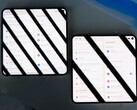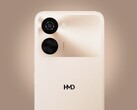Verdict on the Xiaomi Mix Flip 2
Despite its foldable design, the Mix Flip 2 delivers flagship-level performance in many areas and stands out as one of the best flip phones of the year. Xiaomi's compact foldable combines one of the fastest smartphone SoCs with comparatively low throttling, long battery life and a bright LTPO OLED panel with an adaptive refresh rate.
However, the foldable form factor still requires compromises in certain areas, such as connectivity (including USB 2.0) and the cameras. When folded, we would also have preferred a slimmer design, similar to fold-style smartphones.
Another drawback at this price point is Xiaomi's unclear update policy, at least for the Chinese-market model.
Pros
Cons
Price and availability of the Xiaomi Mix Flip 2

The Mix Flip 2 is currently available only in China. The base model with 256 GB of storage and 12 GB of RAM is priced at 6,000 yuan, which equates to about 720 euros or $785 USD. As an import, Trading Shenzhen lists the device starting at around 870 euros or $950 USD. Since the first generation was officially released in Europe, it is likely that the successor will also see a global launch.
Table of Contents
- Verdict on the Xiaomi Mix Flip 2
- Specifications of the Xiaomi Mix Flip 2
- Build and features – Android smartphone in various colours
- Communication and operation with 5G and LTE Band 20
- Software and sustainability – compact phone with Android 15
- Cameras – flip smartphone with Leica collaboration
- Display – Xiaomi relies on OLED panels
- Performance, emissions and battery life – flip phone with high-end processor
- Notebookcheck overall rating
- Alternative options at a glance
Specifications of the Xiaomi Mix Flip 2
Build and features – Android smartphone in various colours
The Xiaomi Mix Flip 2 impresses with excellent build quality. The crease in the inner display is perceptible to the touch but barely noticeable in everyday use. The metal frame not only provides a premium feel but also enhances the phone's high-end appearance. Dimensions remain almost unchanged compared to the predecessor, with only a slight increase in weight.
The Mix Flip 2 is available in a wide range of colour options. As with the previous model, an IP54 rating for protection against dust and splashes is likely, although this has so far only been confirmed for the global version and not for our test unit.
In terms of features, the Xiaomi Mix Flip 2 includes an IR blaster, dual-band GNSS, Bluetooth 5.4, dual SIM functionality, stereo speakers and NFC. Users who require eSIM support or a German-language interface should wait, as the China ROM does not support either.
The USB-C port is a notable drawback, as it remains limited to USB 2.0 speeds, which is disappointing at this price point.
Communication and operation with 5G and LTE Band 20
The Mix Flip 2 comes with modern Wi-Fi 7 including MU-MIMO support. Despite making use of the 6 GHz band, real-world speeds fall slightly short of expectations. Paired with an Asus ROG Rapture GT-AXE11000 router, we measured an average throughput of around 1,300 Mbit/s, which is good, but not outstanding.
The Chinese-market model already supports LTE bands 20 and 28 as well as a wide range of 5G bands. This makes importing the device an attractive option for those who do not want to wait for the global version.
Both the inner 6.86-inch foldable screen and the small 4-inch cover display are responsive and benefit from a 120 Hz refresh rate, which ensures smooth operation. The front panel supports a number of apps, including some third-party ones, but it still cannot fully replace the main display.
For biometric security, a fast fingerprint sensor is integrated into the power button, and there is also a 2D face unlock function.
| Networking | |
| Xiaomi Mix Flip 2 | |
| iperf3 transmit AXE11000 6GHz | |
| iperf3 receive AXE11000 6GHz | |
| Motorola Razr 60 Ultra | |
| iperf3 transmit AXE11000 6GHz | |
| iperf3 receive AXE11000 6GHz | |
| Samsung Galaxy Z Flip6 5G | |
| iperf3 transmit AXE11000 | |
| iperf3 receive AXE11000 | |
| iperf3 transmit AXE11000 6GHz | |
| iperf3 receive AXE11000 6GHz | |
| Xiaomi Mix Flip | |
| iperf3 transmit AXE11000 | |
| iperf3 receive AXE11000 | |
| Honor Magic V Flip | |
| iperf3 transmit AXE11000 | |
| iperf3 receive AXE11000 | |
| Average 802.11 a/b/g/n/ac/ax/be | |
| iperf3 transmit AXE11000 | |
| iperf3 receive AXE11000 | |
| iperf3 transmit AXE11000 6GHz | |
| iperf3 receive AXE11000 6GHz | |
| Average of class Smartphone | |
| iperf3 transmit AXE11000 | |
| iperf3 receive AXE11000 | |
| iperf3 transmit AXE11000 6GHz | |
| iperf3 receive AXE11000 6GHz | |
Software and sustainability – compact phone with Android 15
The Mix Flip 2 runs Xiaomi's in-house HyperOS 2, which is based on Android 15. As is typical of the Chinese-market model, the software offers only limited language packs and does not support Android Auto.
No details are provided regarding the duration of software updates. However, a global version would benefit from the new EU directive, which requires software support until at least 2031.
Exact information on the materials used or an official carbon footprint is not available, making it difficult to assess the smartphone's overall environmental impact.
Cameras – flip smartphone with Leica collaboration
The Mix Flip 2 benefits from Xiaomi's partnership with Leica, featuring a 50-MP main camera with the Light Hunter 800 sensor and OIS. This combination delivers high dynamic range and pleasing sharpness, producing good results even in challenging lighting conditions. Thanks to the foldable form factor, photos and videos can also be taken conveniently with the rear cameras via the cover screen.
Unlike the original Mix Flip, Xiaomi has dropped the 2x telephoto lens this time, opting instead for an ultra-wide-angle unit alongside the 23-mm main camera. This choice makes sense, as the telephoto lens on the predecessor failed to impress in our tests. While the 50-MP ultra-wide-angle camera is not exceptional for this price range, it provides solid image quality and rounds out the camera setup well.
Image comparison
Choose a scene and navigate within the first image. One click changes the position on touchscreens. One click on the zoomed-in image opens the original in a new window. The first image shows the scaled photograph of the test device.
Prim. cameraPrim. cameraPrim. camera - low lightUltra-wide ang. camera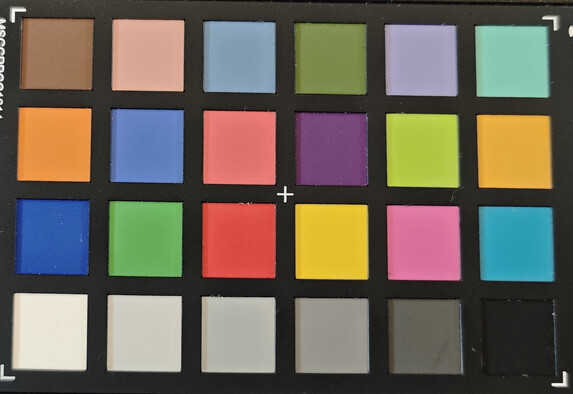
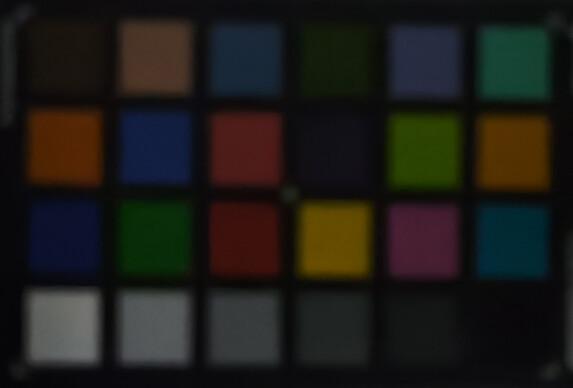
Display – Xiaomi relies on OLED panels
In terms of display sizes, resolutions and refresh rates, the Mix Flip 2 remains unchanged compared with the first generation. The main display still measures 6.86 inches and features a rather elongated 21.4:9 aspect ratio.
On the positive side, peak brightness in the more realistic APL18 measurement reaches an impressive 2,552 cd/m². This ensures that the LTPO panel is bright enough to deliver first-class HDR effects.
According to the manufacturer, the 4.01-inch cover display should achieve brightness levels similar to those of the inner screen. In our test, however, we measured only around 652 cd/m². As is typical for OLED, PWM is used for brightness control.
| |||||||||||||||||||||||||
Brightness Distribution: 95 %
Center on Battery: 1077 cd/m²
Contrast: ∞:1 (Black: 0 cd/m²)
ΔE ColorChecker Calman: 2.11 | ∀{0.5-29.43 Ø4.8}
ΔE Greyscale Calman: 2.3 | ∀{0.09-98 Ø5.1}
99.9% sRGB (Calman 2D)
Gamma: 2.155
CCT: 6275 K
| Xiaomi Mix Flip 2 AMOLED, 2912x1224, 6.9" | Motorola Razr 60 Ultra AMOLED, 2992x1224, 7" | Samsung Galaxy Z Flip6 5G Dynamic AMOLED 2X, 2640x1080, 6.7" | Xiaomi Mix Flip AMOLED, 2912x1224, 6.9" | Honor Magic V Flip OLED, 2520x1080, 6.8" | |
|---|---|---|---|---|---|
| Screen | 33% | -3% | -23% | 35% | |
| Brightness middle (cd/m²) | 1077 | 1379 28% | 1210 12% | 949 -12% | 1529 42% |
| Brightness (cd/m²) | 1036 | 1393 34% | 1221 18% | 949 -8% | 1535 48% |
| Brightness Distribution (%) | 95 | 93 -2% | 98 3% | 98 3% | 97 2% |
| Black Level * (cd/m²) | |||||
| Colorchecker dE 2000 * | 2.11 | 1.05 50% | 3.1 -47% | 2.1 -0% | 1.3 38% |
| Colorchecker dE 2000 max. * | 3.62 | 1.79 51% | 4.2 -16% | 5.6 -55% | 2.1 42% |
| Greyscale dE 2000 * | 2.3 | 1.4 39% | 2 13% | 3.8 -65% | 1.5 35% |
| Gamma | 2.155 102% | 2.124 104% | 2.05 107% | 2.25 98% | 2.22 99% |
| CCT | 6275 104% | 6362 102% | 6666 98% | 6826 95% | 6303 103% |
* ... smaller is better
Screen Flickering / PWM (Pulse-Width Modulation)
| Screen flickering / PWM detected | 121 Hz Amplitude: 19 % | ||
The display backlight flickers at 121 Hz (worst case, e.g., utilizing PWM) . The frequency of 121 Hz is very low, so the flickering may cause eyestrain and headaches after extended use. In comparison: 53 % of all tested devices do not use PWM to dim the display. If PWM was detected, an average of 8211 (minimum: 5 - maximum: 343500) Hz was measured. | |||
Measurement series with fixed zoom level and different brightness settings. (The amplitude curve at minimum brightness looks flat, but this is due to the scaling. The info box shows the enlarged version of the amplitude at minimum brightness.)
Using CalMAN software and a spectrophotometer, the flexible OLED panel demonstrates good calibration for both colours and greyscales, with low DeltaE values remaining within the ideal range (<3).
Display Response Times
| ↔ Response Time Black to White | ||
|---|---|---|
| 1 ms ... rise ↗ and fall ↘ combined | ↗ 0.5 ms rise | |
| ↘ 0.5 ms fall | ||
| The screen shows very fast response rates in our tests and should be very well suited for fast-paced gaming. In comparison, all tested devices range from 0.1 (minimum) to 240 (maximum) ms. » 3 % of all devices are better. This means that the measured response time is better than the average of all tested devices (20.3 ms). | ||
| ↔ Response Time 50% Grey to 80% Grey | ||
| 1.4 ms ... rise ↗ and fall ↘ combined | ↗ 0.8 ms rise | |
| ↘ 0.6 ms fall | ||
| The screen shows very fast response rates in our tests and should be very well suited for fast-paced gaming. In comparison, all tested devices range from 0.165 (minimum) to 636 (maximum) ms. » 5 % of all devices are better. This means that the measured response time is better than the average of all tested devices (31.8 ms). | ||
Performance, emissions and battery life – flip phone with high-end processor
The Mix Flip 2 is powered by the Snapdragon 8 Elite and benefits from a dual vapour-chamber cooling system. As a result, the Xiaomi phone throttles noticeably less in 3DMark stress tests than many of its rivals. In benchmarks, the Mix Flip 2 even edges ahead of the Motorola Razr 60 Ultra.
Despite its compact flip form factor, battery capacity has grown to a respectable 5,165 mAh. The foldable also supports 67 W wired charging and 50 W wireless charging. In our real-world battery test, the Mix Flip 2 lasted almost 20 hours, making it the longest-running flip phone we have tested so far. Users should have no trouble getting through a full day without recharging.
| Xiaomi Mix Flip 2 | Motorola Razr 60 Ultra | Samsung Galaxy Z Flip6 5G | Xiaomi Mix Flip | Honor Magic V Flip | Average 512 GB UFS 4.1 Flash | Average of class Smartphone | |
|---|---|---|---|---|---|---|---|
| AndroBench 3-5 | -21% | -22% | -3% | -46% | -7% | -41% | |
| Sequential Read 256KB (MB/s) | 4083.53 | 3504.7 -14% | 3930.68 -4% | 4063.4 0% | 1947.4 -52% | 3965 ? -3% | 2212 ? -46% |
| Sequential Write 256KB (MB/s) | 3894.12 | 3450.9 -11% | 2603.84 -33% | 3332.67 -14% | 1672.06 -57% | 3573 ? -8% | 1813 ? -53% |
| Random Read 4KB (MB/s) | 403.94 | 308.6 -24% | 445.5 10% | 367.24 -9% | 277.55 -31% | 367 ? -9% | 294 ? -27% |
| Random Write 4KB (MB/s) | 534.73 | 347 -35% | 202.97 -62% | 587.21 10% | 297.97 -44% | 497 ? -7% | 338 ? -37% |
(-) The maximum temperature on the upper side is 49.2 °C / 121 F, compared to the average of 35.2 °C / 95 F, ranging from 21.9 to 247 °C for the class Smartphone.
(-) The bottom heats up to a maximum of 47.4 °C / 117 F, compared to the average of 33.9 °C / 93 F
(+) In idle usage, the average temperature for the upper side is 22.8 °C / 73 F, compared to the device average of 32.9 °C / 91 F.
3DMark Steel Nomad Stress Test
| 3DMark | |
| Wild Life Extreme Stress Test | |
| Xiaomi Mix Flip 2 | |
| Xiaomi Mix Flip | |
| Honor Magic V Flip | |
| Samsung Galaxy Z Flip6 5G | |
| Solar Bay Stress Test Stability | |
| Xiaomi Mix Flip 2 | |
| Motorola Razr 60 Ultra | |
| Xiaomi Mix Flip | |
| Samsung Galaxy Z Flip6 5G | |
Xiaomi Mix Flip 2 audio analysis
(+) | speakers can play relatively loud (85.8 dB)
Bass 100 - 315 Hz
(-) | nearly no bass - on average 20% lower than median
(±) | linearity of bass is average (12% delta to prev. frequency)
Mids 400 - 2000 Hz
(±) | higher mids - on average 6.4% higher than median
(+) | mids are linear (6.8% delta to prev. frequency)
Highs 2 - 16 kHz
(+) | balanced highs - only 3.9% away from median
(+) | highs are linear (5.5% delta to prev. frequency)
Overall 100 - 16.000 Hz
(±) | linearity of overall sound is average (19.3% difference to median)
Compared to same class
» 25% of all tested devices in this class were better, 9% similar, 66% worse
» The best had a delta of 12%, average was 35%, worst was 134%
Compared to all devices tested
» 45% of all tested devices were better, 8% similar, 47% worse
» The best had a delta of 4%, average was 24%, worst was 134%
Xiaomi Mix Flip audio analysis
(+) | speakers can play relatively loud (89.2 dB)
Bass 100 - 315 Hz
(-) | nearly no bass - on average 26.4% lower than median
(±) | linearity of bass is average (7.7% delta to prev. frequency)
Mids 400 - 2000 Hz
(±) | higher mids - on average 5.1% higher than median
(+) | mids are linear (6.9% delta to prev. frequency)
Highs 2 - 16 kHz
(±) | higher highs - on average 5.6% higher than median
(+) | highs are linear (5.4% delta to prev. frequency)
Overall 100 - 16.000 Hz
(±) | linearity of overall sound is average (18.2% difference to median)
Compared to same class
» 16% of all tested devices in this class were better, 8% similar, 75% worse
» The best had a delta of 12%, average was 35%, worst was 134%
Compared to all devices tested
» 38% of all tested devices were better, 8% similar, 55% worse
» The best had a delta of 4%, average was 24%, worst was 134%
| Xiaomi Mix Flip 2 5165 mAh | Motorola Razr 60 Ultra 4700 mAh | Samsung Galaxy Z Flip6 5G 4000 mAh | Xiaomi Mix Flip 4780 mAh | Honor Magic V Flip 4800 mAh | |
|---|---|---|---|---|---|
| Battery runtime | |||||
| WiFi v1.3 (h) | 20 | 15.4 -23% | 15.5 -22% | 14.9 -25% | 19.3 -3% |
Notebookcheck overall rating
The Mix Flip 2 ranks among the top flip phones of the year, and quite possibly takes the crown. With any luck, Xiaomi will extend availability to global markets.
Xiaomi Mix Flip 2
- 08/15/2025 v8
Marcus Herbrich
Alternative options at a glance
Image | Model / Review | Price | Weight | Drive | Display |
|---|---|---|---|---|---|
| Xiaomi Mix Flip 2 Qualcomm Snapdragon 8 Elite ⎘ Qualcomm Adreno 830 ⎘ 12 GB Memory, 512 GB | Amazon: 1. $8.99 QWFORQW [2+2 Pack for Xiaomi... 2. $8.99 QWFORQW [3 Pack Screen Prote... 3. $6.99 QWFORQW 2 Pack Camera Lens P... List Price: 970€ | 199 g | 512 GB UFS 4.1 Flash | 6.86" 2912x1224 460 PPI AMOLED | |
| Motorola Razr 60 Ultra Qualcomm Snapdragon 8 Elite ⎘ Qualcomm Adreno 830 ⎘ 16 GB Memory, 512 GB | Amazon: $999.99 List Price: 1299€ | 199 g | 512 GB UFS 4.0 Flash | 7.00" 2992x1224 462 PPI AMOLED | |
| Samsung Galaxy Z Flip6 5G Qualcomm Snapdragon 8 Gen 3 for Galaxy ⎘ Qualcomm Adreno 750 ⎘ 12 GB Memory, 512 GB | Amazon: $799.97 List Price: 1319€ | 187 g | 512 GB UFS 4.0 Flash | 6.70" 2640x1080 426 PPI Dynamic AMOLED 2X | |
| Xiaomi Mix Flip Qualcomm Snapdragon 8 Gen 3 ⎘ Qualcomm Adreno 750 ⎘ 12 GB Memory, 256 GB | Amazon: 1. $8.99 QWFORQW [2+2 Pack for Xiaomi... 2. $6.99 QWFORQW 2 Pack Camera Lens P... 3. $8.99 QWFORQW [3 Pack Screen Prote... List Price: 1299€ | 190 g | 256 GB UFS 4.0 Flash | 6.86" 2912x1224 460 PPI AMOLED | |
| Honor Magic V Flip Qualcomm Snapdragon 8+ Gen 1 ⎘ Qualcomm Adreno 730 ⎘ 12 GB Memory, 512 GB | Amazon: 1. $15.99 YOUULAR [2 Pack Privacy Scre... 2. $14.99 YOUULAR [2 Pack Screen Prote... 3. $19.95 BoxWave Cable Compatible wit... | 193 g | 512 GB UFS 3.1 Flash | 6.80" 2520x1080 403 PPI OLED |
Transparency
The selection of devices to be reviewed is made by our editorial team. The test sample was provided to the author as a loan by the manufacturer or retailer for the purpose of this review. The lender had no influence on this review, nor did the manufacturer receive a copy of this review before publication. There was no obligation to publish this review. As an independent media company, Notebookcheck is not subjected to the authority of manufacturers, retailers or publishers.
This is how Notebookcheck is testing
Every year, Notebookcheck independently reviews hundreds of laptops and smartphones using standardized procedures to ensure that all results are comparable. We have continuously developed our test methods for around 20 years and set industry standards in the process. In our test labs, high-quality measuring equipment is utilized by experienced technicians and editors. These tests involve a multi-stage validation process. Our complex rating system is based on hundreds of well-founded measurements and benchmarks, which maintains objectivity. Further information on our test methods can be found here.






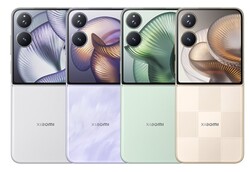
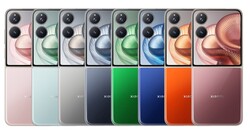
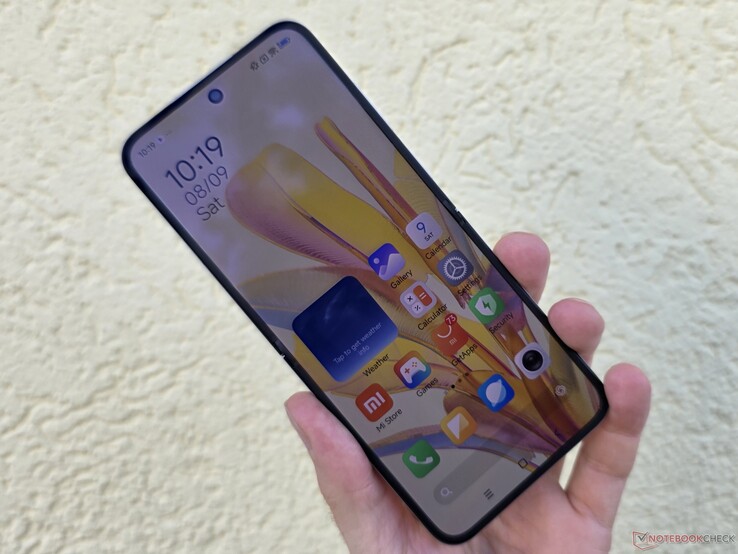




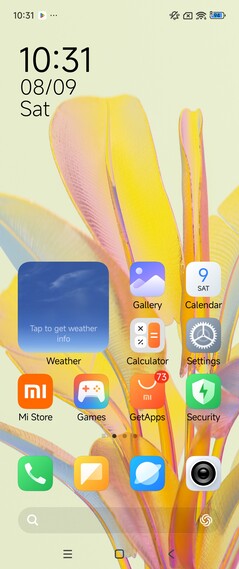
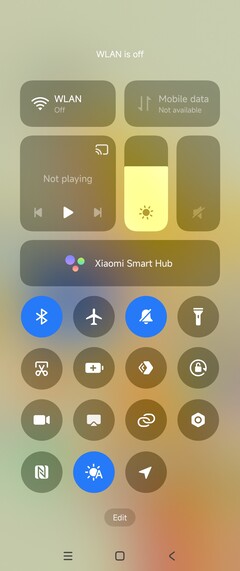
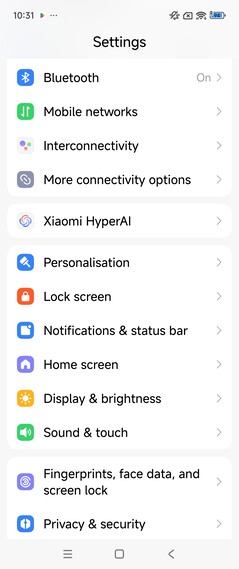








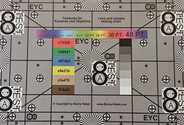



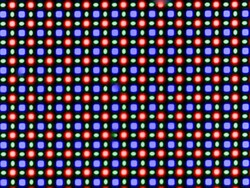
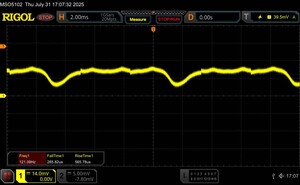





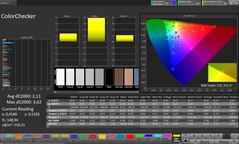
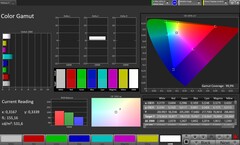
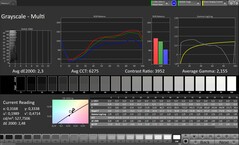

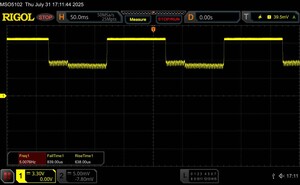
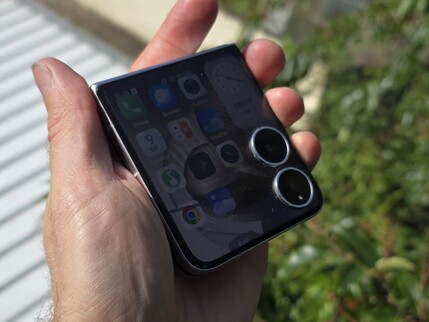
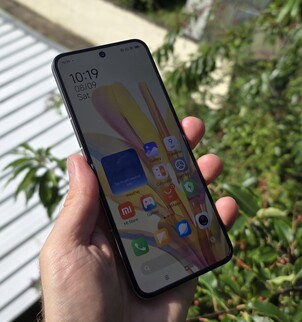
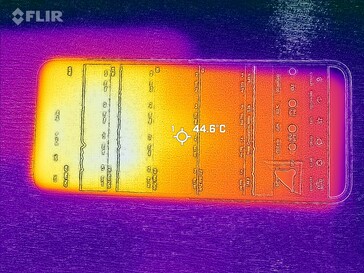
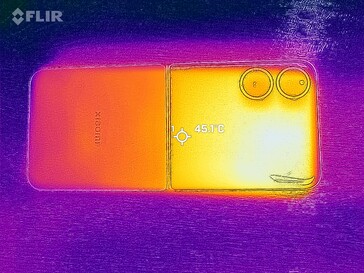
 Total Sustainability Score:
Total Sustainability Score: 







